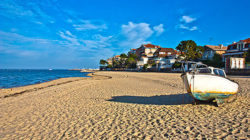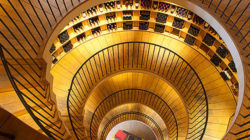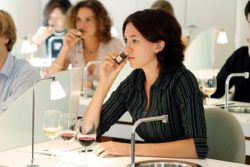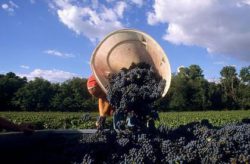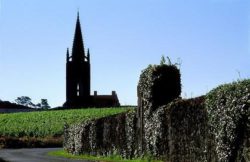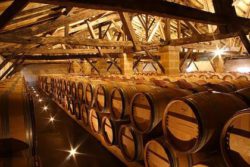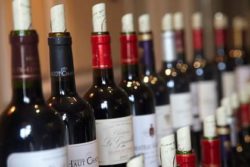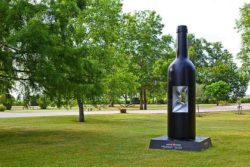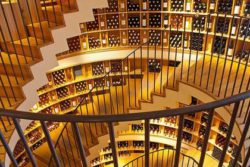The silent majority
However, the celebrated Grands Crus do not even make up 5% of the production, and simple cask wine has become harder to sell since the millennium. The competition from overseas initially led to subsidised distillation, and then reduction of the growing area. This affects the majority of the 6800 Bordelaise AOC winegrowers, who are always Château owners, although there are only a few real castles amongst the farms. Even for them, marketing is well organised. 300 Maisons de Négoce and 89 commercial brokers market 70% of the production, in China and Germany amongst others, the largest buyers in more than 150 export countries. This includes 36 associations and 4 cooperatives, which supply 40% of winegrowers.
One obstacle to sales is its own image. Wasteful dinners in evening dress, which three star chefs cook up, are part of Bordeaux' self image. At Dubai International Airport, there was recently a single bottle of Château Margaux for sale for €143,000. However, the celebrated Grands Crus do not even make up 5% of the production, and simple cask wine has become harder to sell since the millennium. The competition from overseas initially led to subsidised distillation, and then reduction of the growing area. This affects the majority of the 6800 Bordelaise AOC winegrowers, who are always Château owners, although there are only a few real castles amongst the farms.
Even for them, marketing is well organised. 300 Maisons de Négoce and 89 commercial brokers market 70% of the production, in China and Germany amongst others, the largest buyers in more than 150 export countries. This includes 36 associations and 4 cooperatives, which supply 40% of winegrowers. One obstacle to sales is its own image. Wasteful dinners in evening dress, which three star chefs cook up, are part of Bordeaux' self image. At Dubai International Airport, there was recently a single bottle of Château Margaux for sale for €143,000. As wine has become a popular drink, this scares away many new drinkers. In light of such fantastical prices, they believe that Bordeaux is always very expensive. Especially younger people tend to take a critical view of products with a collar and tie image. Many believe that wine can only be understood by experts.
Therefore, the sector association is trying to break through these clichés with image campaigns. For an estimated €8 million, in the scope of this, Bordeaux is combined with street food, sustainability, urban cuisine or simply party. Mega events such as “Fête Le Vin“ in Bordeaux, where hundreds of winegrowers offer their wines, should emphasise the uncomplicated festival character. There are now also similar events in Los Angeles and Shanghai. Young winegrowers with new concepts will be introduced. In price critical Germany, lists such as “100 wines to discover“ force you to price the wines in the range of €5 to €15. However, a short term recovery can be observed in this country.
Meanwhile, market participants who normally appear quieter are asking themselves whether the strategy will work in the long term. There are some large companies on the huge growing areas of Bordeaux. Families such as the Lurton family, who own over 600 hectares of vineyard, have to think seriously about their sales channels, and influence the development of the area with their economic power. Traditionally you do not show off wealth. This also applies to the Castel family. What started as a family vineyard in 1957, is today a company with a turnover of €3 billion. The majority comes from the worldwide sale of beer and water. Castel is the 7th richest drinks manufacturer in the world. The portfolio was poured into glossy brochures a long time ago. When it comes to company strategy however, where others use immodest superlatives for their own work, you can read expressions such as “sharing” and “humility”.Even with wine you follow a long term strategy. “We only buy unknown vineyards“, explains Philippe Castel, “no Grands Crus”. Until now there are 20, where he is optimising the terroirs and cellar work step by step, with the help of renowned oenologists such as Hubert de Bouärd. So, the value of each individual Château increases slowly, but surely. The wine sector of the family company is worth €30 to 35 million today. A prime example is the current top quality good Château Montlabert, on the doorstep of Saint-Émilion. Castel bought it in 2008. Then the subscription price was €15. Today it has more than doubled. The wine is available in restaurants, in specialist retailers, even in food shops. But here too, Philippe Castel sold a share via negotiants. This increases the level of awareness. “In addition they could refuse later, if they can’t now.”
Matthias Stelzig
